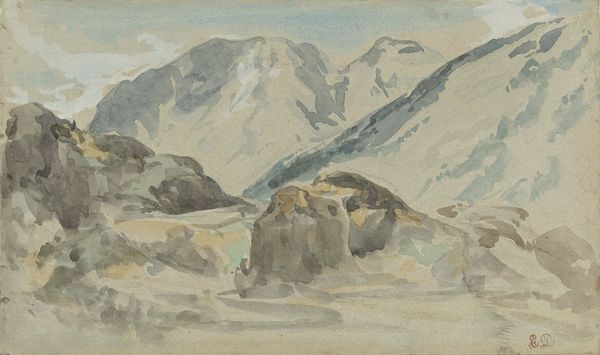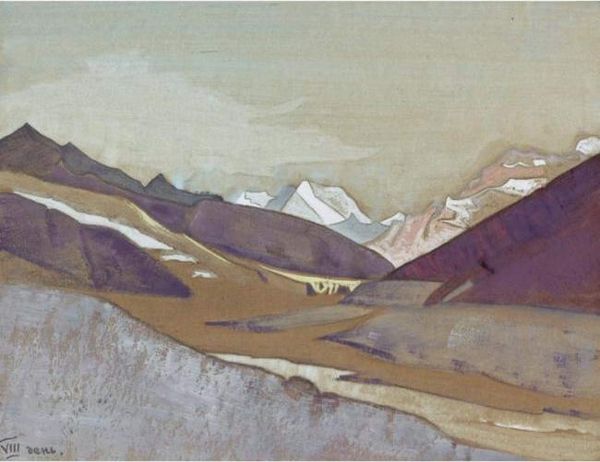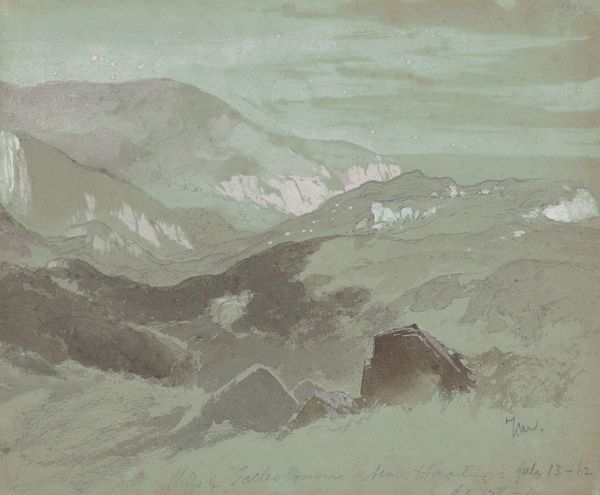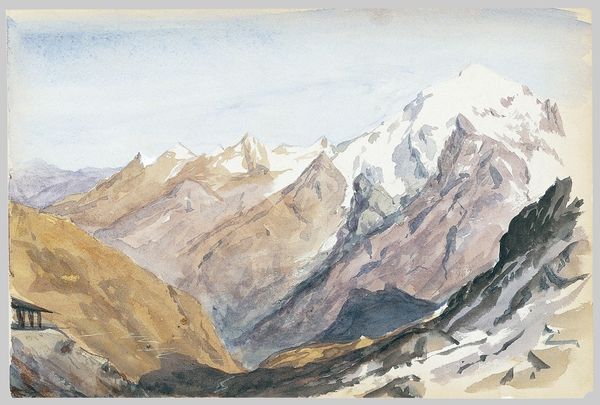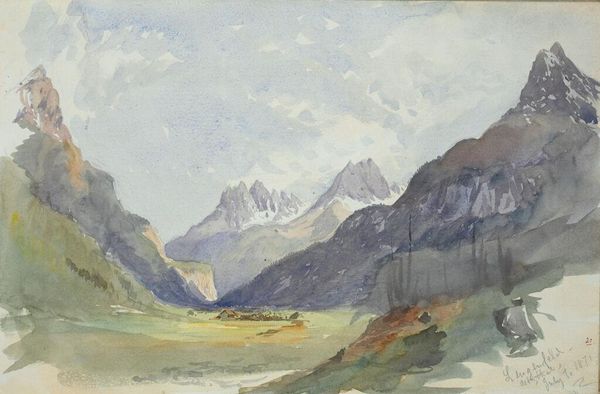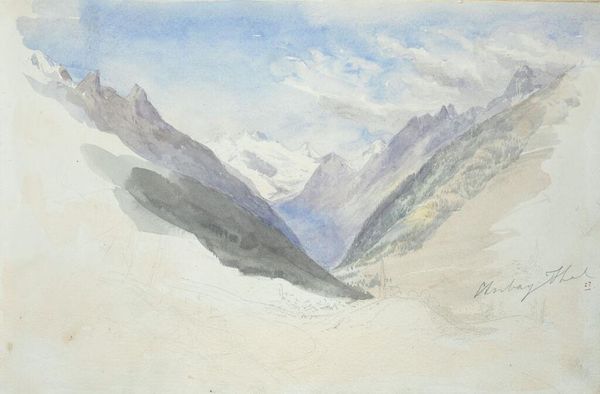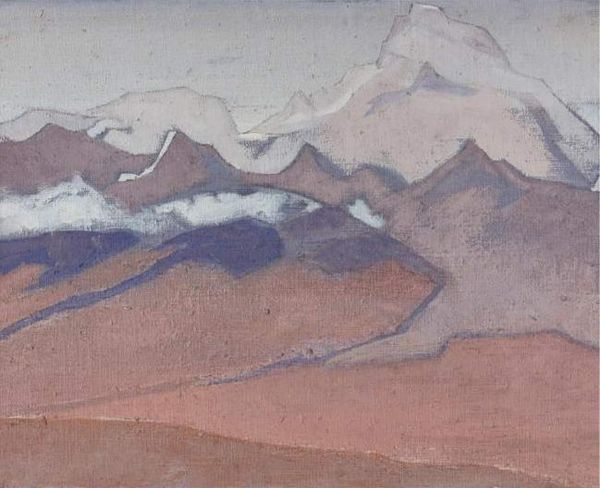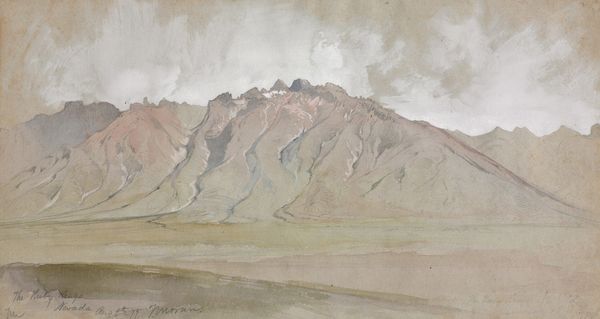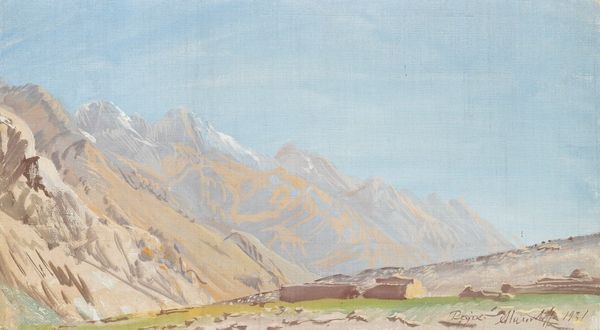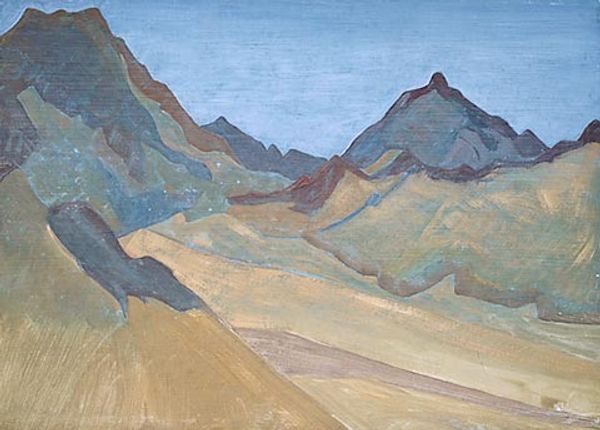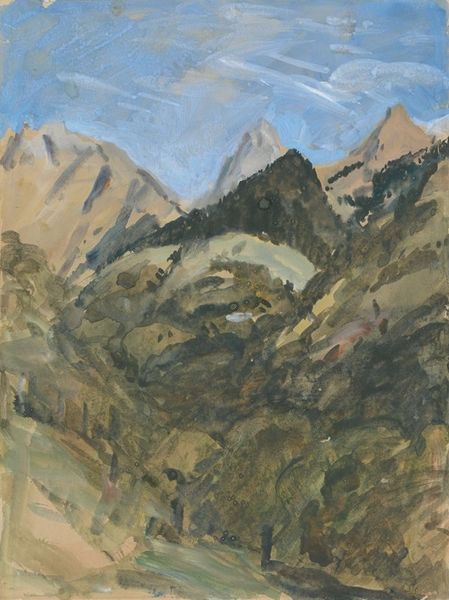
Copyright: Public Domain: Artvee
Curator: Looking at this piece, I immediately feel transported to a hushed, contemplative space. There's something incredibly serene and almost reverential about the scene. Editor: You're spot on! What we're looking at is Thomas Moran's "The Upper End of Little Cottonwood Canyon, Wasatch Range, near Ogden, Utah" created in 1879 using watercolor and graphite. It's quite stunning. Curator: "Cottonwood Canyon"—sounds charming and dramatic! It’s funny how the seemingly delicate medium gives it such presence. Is that deliberate, d’you think? Editor: Absolutely. Consider Moran's involvement with the Romanticism movement; he masterfully uses watercolor, with its inherent translucence, to convey the sublime grandeur of the American West. Curator: The translucence… exactly! It almost feels as though I can see through the mountains, not literally, but… to the sheer forces that made them. And how lightly he touches on the details! Like tiny poems etched into stone. Editor: The restrained palette reinforces the geological monumentality, focusing our attention on the interplay of light and shadow which animates the contours. He uses value contrasts in the peaks and valleys to enhance the three-dimensionality, too. Curator: Almost dreamlike. A waking dream, where every shade whispers secrets of geological time. Do you think there’s a touch of the painter’s ego in such endeavors, a desire to harness such immense beauty? Editor: The composition is all about that contrast. The textured foreground acts as a foil to the smooth, expansive mountains, really emphasizing their scale. Plus, I think Moran invites the viewer to consider humanity’s place, our transient existence compared to nature’s eternity. Curator: Gosh, it truly does make you feel wonderfully small, doesn't it? To see so much raw, untouched magnificence frozen perfectly in time by a fleeting human moment. It reminds me of childhood summers when every moment felt infinite. Editor: So, considering the layers of form, technique, and historical context, "The Upper End of Little Cottonwood Canyon" goes far beyond topographical rendering. Moran uses landscape to examine and elevate our experience. Curator: Right. And somehow, this particular scene nudges us to consider how something simultaneously intimate and immense reflects ourselves in that eternal cycle. Thank you, Thomas, for whispering such beauty. Editor: An elegant observation, exactly. The piece speaks volumes about his understanding of light, atmosphere, and geological processes, giving us so much to think about.
Comments
No comments
Be the first to comment and join the conversation on the ultimate creative platform.

